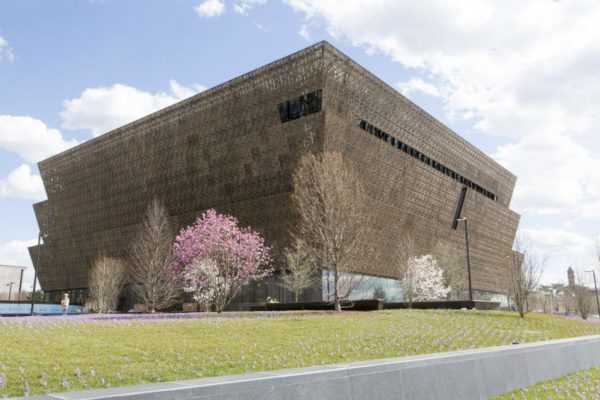The Smithsonian’s new National Museum of African American History and Culture, which President Barack Obama ceremonially opened in Washington, D.C., on Sept. 24, will play a valuable part in the process of changing how African Americans are depicted in American history and society.
And not just on the national stage, but here in Texas as well.
The $540 million museum is a massive undertaking that seeks to narrate the experiences and contributions of black Americans. It is a story that is too often ignored, maligned or relegated to the margins in favor of “traditional” celebratory stories of our nation’s glorious past.
It’s no secret that race occupies a looming, yet contentious place in our social landscape. At a time that has witnessed the election of the first black president along with an unrelenting level of racial violence against black people in Texas and across the country, perhaps the most importance and significance that this museum holds is in the impact on K-12 education.
As scholars who research how race and culture figure into the curricula and teaching practices of K-12 schools, this event brings hope. There are longstanding challenges around making sure school curricula address the experiences and histories of racially diverse student populations.
These concerns trace back 100 years, as African Americans were either nonexistent or inaccurately portrayed in traditional school curricula and in public spaces such as museums. For example, it was not uncommon to find everything from Texas textbooks to international museum exhibits that portrayed peoples of African descent as either “happily” enslaved or as savages.
We’ve seen some changes during the past few decades. Yet even though enslaved people of African descent are no longer presented as “happy slaves,” other key exclusions persist.
For instance, in one study we conducted that examined the state’s fifth-, eighth- and 11-grade American history textbooks for their portrayals of violence directed toward African Americans — such as floggings, lynchings and church bombings — we found that these texts often left out governmental and institutional ties to racial violence. Racial violence was depicted as random acts or the behaviors of overtly racist individuals, or as we call it — just “bad men doing bad things.”
That’s why this new museum in Washington, D.C., is so important to Texas and beyond. It will play a major role in how African Americans are portrayed, from school curricula to the minds of adults.
There are other benefits as well. Although African American museums already exist in cities such as Cleveland and Philadelphia, none can attract the number of visitors that a Smithsonian museum in Washington stands to garner.
The cultural space of a new museum is also significant. The museum not only serves as a location to walk through exhibits, a museum of this scale will become a cultural space of educational learning and research. It will help to create a new epicenter for collecting and examining black history. Histories will be deepened and rewritten through this museum.
The museum is an architectural wonder. Standing more than eight stories, the building houses more than 37,000 objects that address history, literature, music, arts and popular culture. This collection is the first of its kind. No other museum exists that has exhibited African American history with the kind of financial or institutional support.
For Texans, this museum offers an opportunity to spark conversation on race and the important role that African Americans have had in the U.S. narrative, as well as in Texas, a sorely under-addressed topic in its K-12 schools and curricula.
A building, no matter how lovely and substantial, cannot repair the open and unhealed wound of our country’s virulent racist history. But we know that symbols matter. And representation matters too. They both impact the stories we tell about our world and how we make meaning about what truly matters in it. The National Museum of African American History and Culture not only reflects the unprecedented place African Americans hold in the U.S. story, it also has the potential of representing the importance of this story, in all its terror and beauty, for generations to come.
Keffrelyn D. Brown and Anthony L. Brown are associate professors of instruction and curriculum in the College of Education at The University of Texas at Austin.
A version of this op-ed appeared in the Fort Worth Star Telegram, Houston Chronicle and the Waco Tribune Herald.
To view more op-eds from Texas Perspectives, click here.
Like us on Facebook.




